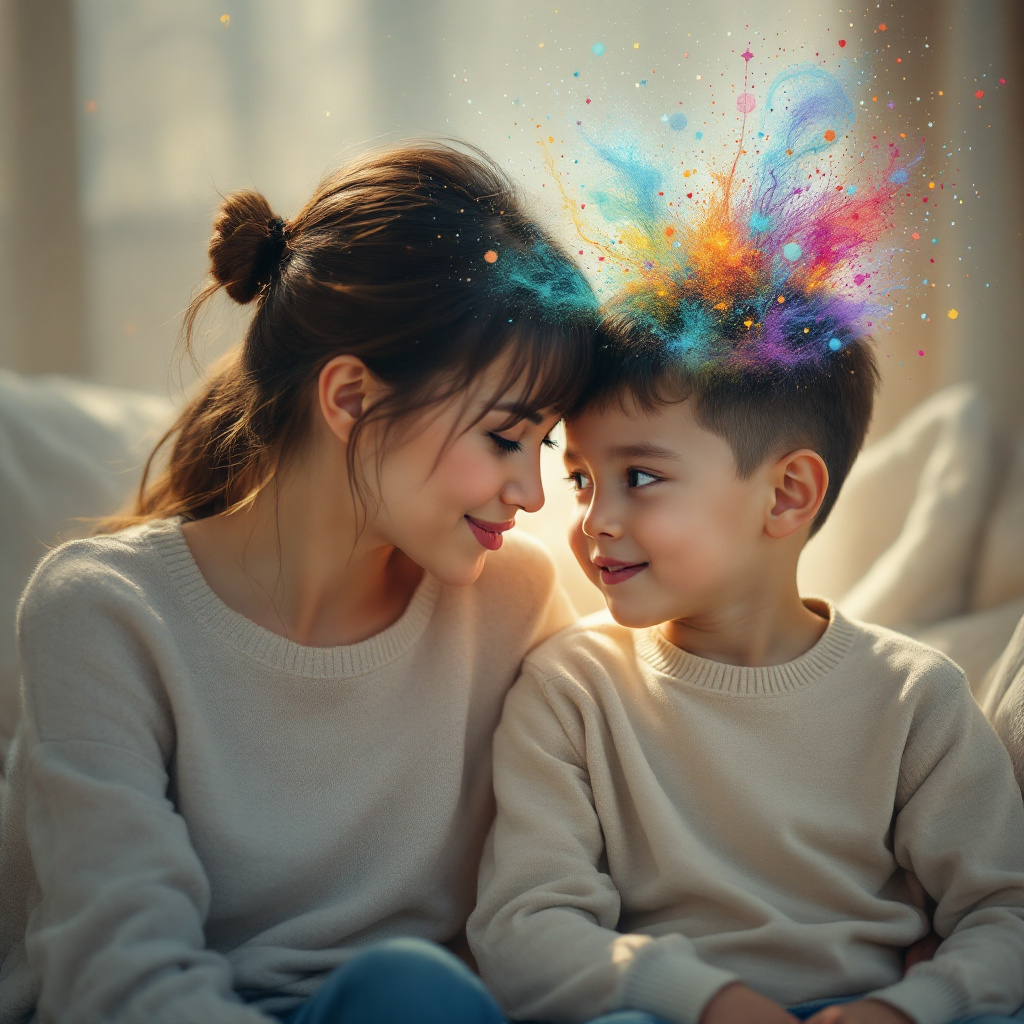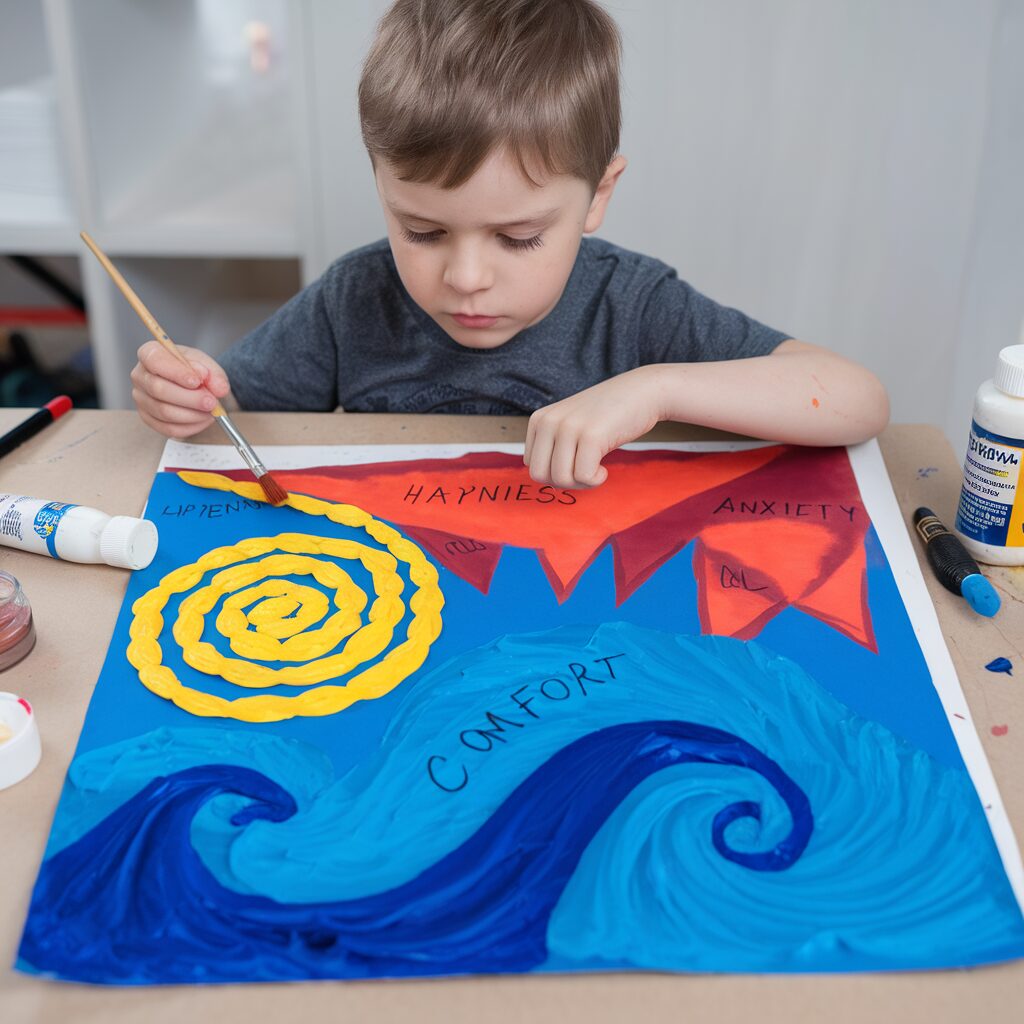While other parents complained about their children’s dramatic emotional outbursts, I would have given anything to see my son’s face light up just once—not realizing his emotions were expressed in movements, routines, and patterns I’d been missing all along.
Understanding flat affect in autism transformed my relationship with my son. For years, I misinterpreted his blank expressions as disinterest or lack of emotion, until I discovered the rich emotional world hiding behind his neutral face.
 In this article, you’ll learn:
In this article, you’ll learn:
- What flat affect in autism really means
- Five key moments that changed my understanding of my son’s emotional life
- Practical strategies to connect with your child beyond facial expressions
- Tools and resources that can bridge the communication gap
Let’s explore how to see past the expressionless surface and discover the emotional depth that lies beneath.
What is Flat Affect in Autism Spectrum Disorder? Definition and Symptoms
Flat affect is a reduced or limited expression of emotions through facial expressions, tone of voice, or body language. It’s common in autism spectrum disorder but doesn’t mean a lack of emotions — rather, it’s a disconnect between feeling emotions and showing them in ways others can easily recognize.
Think of it like this: most people’s emotional expression works like a dimmer switch that adjusts automatically. For someone with flat affect, the internal feelings might be just as bright, but the dimmer switch connecting to external expression is faulty.
My son Idan feels happiness, sadness, excitement, and frustration just like anyone else. His brain simply processes and expresses these emotions differently. Understanding this fundamental truth was my first step toward real connection.
Now, let me share the moments that forever changed how I understood my son’s emotional world.
5 Key Moments That Helped Me Understand Autism and Emotional Expression
The Birthday Party Revelation
Idan sat stone-faced at his own 5th birthday party while other children squealed with delight around him. Family members shot concerned glances my way. A well-meaning aunt whispered, “Doesn’t he like his gifts?” I felt that familiar ache — was my son unhappy on his special day?
Then I noticed it — his fingers rapidly tapping against his leg in a particular pattern I’d seen before during moments of excitement. His body was quietly celebrating even while his face remained calm.
 This moment taught me to look beyond the obvious signs of emotion that neurotypical people rely on. Idan’s joy manifested through subtle body movements rather than smiles or exclamations. Once I knew what to look for, I could see his happiness clearly.
This moment taught me to look beyond the obvious signs of emotion that neurotypical people rely on. Idan’s joy manifested through subtle body movements rather than smiles or exclamations. Once I knew what to look for, I could see his happiness clearly.
Why it’s important: When we expect conventional emotional displays from our autistic children, we miss their authentic expressions of feeling. Learning your child’s unique emotional language allows you to validate their experiences rather than questioning if they’re feeling anything at all.
The Language Shift
After the birthday revelation, I completely changed how I talked about emotions with Idan. Instead of constantly asking “Are you happy?” or “Aren’t you excited?” — questions that made him uncomfortable and reinforced that he wasn’t responding “correctly” — I began making observations based on his engagement.
“I see you’re really enjoying this book — you’ve been focused on it for an hour.” “You chose to watch this movie three times this week — it must be one of your favorites.” “You’re working so carefully on that model. I can tell it matters to you.”
This shift in language acknowledged his emotions based on his actions and interests rather than expecting him to perform emotional expressions for my benefit.
Why it’s important: Changing our language validates our children’s emotional experiences without demanding neurotypical confirmation. It shows them we see and understand their feelings even when they can’t or don’t express them in conventional ways.
The Meltdown Journal
For months, I was puzzled by Idan’s seeming indifference in certain social situations but extreme distress in others that seemed similar. On the recommendation of our therapist, I started keeping a detailed journal tracking environmental factors alongside his behavior.
A pattern emerged: Idan wasn’t emotionally disconnected — he was overwhelmed. Specific sensory triggers like fluorescent lighting, crowds, or unexpected schedule changes were causing him to shut down emotionally as a protective measure.
In quieter, more predictable environments, his engagement increased dramatically. It wasn’t that he didn’t care about social connection — he desperately wanted it but couldn’t process both sensory challenges and social cues simultaneously.
Why it’s important: Understanding sensory triggers helps parents differentiate between flat affect and self-protective withdrawal. Creating environments where your child feels safe can allow more emotional connection to shine through.
- Common sensory triggers to watch for:
- Bright or flickering lights
- Loud or unpredictable noises
- Certain textures or clothing tags
- Strong smells
- Too many people or activities happening at once
The Drawing Discovery
During an art therapy session, something extraordinary happened. Idan — my supposedly “emotionless” child — created artwork bursting with feeling. His therapist asked him to draw how different experiences made him feel, and while his face remained neutral, his drawings revealed intense emotions:
- Happiness was explosive yellow spirals covering the entire page
- Anxiety was depicted as sharp red triangles pressing inward
- Comfort was soft blue waves flowing gently across the paper
 I realized that Idan couldn’t easily translate his emotions into facial expressions, but he could express them through color, shape, and movement on paper.
I realized that Idan couldn’t easily translate his emotions into facial expressions, but he could express them through color, shape, and movement on paper.
Why it’s important: Alternative communication methods can bridge the gap when traditional emotional expression isn’t possible. Art, music, writing, or technology can provide channels for emotional expression that facial muscles cannot.
The Expert Conversation
A turning point came during a conversation with a neuropsychologist specializing in autism. She explained that Idan’s brain likely processed emotions normally, but struggled with the motor planning needed to display them facially.
“Think about it like this,” she said. “Your son may feel happiness just as intensely as you do, but displaying that feeling requires a complex series of muscle movements that his brain doesn’t automatically coordinate. It’s not that the emotion isn’t there — the pathway to showing it is just different.”
This scientific explanation removed any lingering doubt. Idan wasn’t emotionless — he simply had a different way of processing and expressing what he felt.
Why it’s important: Understanding the neurological basis for flat affect removes blame and confusion, transforming how we interpret our children’s emotional connections. Knowledge truly is power in this journey.
Autism Communication Strategies: Best Practices for Parents of Children with Flat Affect
Building on these revelations, I’ve developed several strategies that have strengthened my connection with Idan. These approaches have been validated by both therapists and other parents walking similar paths:
- Observe patterns of interest and engagement rather than facial expressions. What does your child choose to do repeatedly? Where do they focus their attention? These are better indicators of positive emotion than smiles.
- Create an emotional dictionary specific to your child. Document the subtle signs that indicate different emotional states — it might be a certain posture, a specific movement, or changes in breathing patterns.
- Use direct, concrete language about emotions. “That game must feel frustrating” can be more helpful than asking “Are you angry?”
- Allow processing time. Many autistic individuals experience emotional reactions on a delay. What seems like indifference might be your child processing a situation that they’ll react to later.
- Validate emotions based on context and knowledge of your child, not just their visible reactions. Statements like “That must feel disappointing” acknowledge feelings even when they’re not visibly expressed.
Child psychologist Dr. Emily Winters notes, “Parents often worry about emotional connection when facial expressions are limited, but connection happens in many ways. Shared experiences, mutual interests, and attunement to subtle cues can create profound bonds that don’t rely on smiles or tears.”
These strategies don’t just help in the moment — they build a foundation for emotional understanding that can last a lifetime.
Overcoming Flat Affect Challenges: Practical Solutions for Autism Parents
Challenge: Family members who don’t understand flat affect
When grandparents, relatives, or friends misinterpret your child’s limited expressions as disinterest or rudeness, it creates additional stress for both you and your child.
Solution: Create a simple one-page explanation of flat affect to share with close family and friends. Include specific examples of how your child does show emotions, even if unconventionally. For example: “When Sam rocks back and forth while looking at his birthday cake, he’s actually expressing excitement.”

Challenge: School environments that misinterpret emotional signals
Teachers might misread your child’s flat affect as boredom, lack of understanding, or disengagement.
Solution: Schedule a meeting with teachers to explain how your child expresses interest and engagement. Provide a list of specific indicators that show your child is emotionally connected to learning, such as leaning forward, asking questions, or spending extra time on assignments—even without the smiles or enthusiastic expressions other children might show.
Challenge: Your own emotional needs for reciprocal expression
As parents, we naturally crave emotional feedback from our children. The absence of visible emotional responses can leave us feeling unappreciated or disconnected.
Solution: Find support through parent groups where others understand this experience. Remember that your child’s expression differences are not a reflection of their love for you. Create your own emotional rituals that don’t depend on facial expressions, like special handshakes, meaningful phrases, or shared activities that become symbols of your connection.
These challenges are real, but with patience and understanding, they can be overcome.
Autism Resources and Tools for Managing Flat Affect in Children
These resources have been invaluable on our journey to understanding and connecting through flat affect:
Communication Tools
- Emotion Wheels and Charts — Visual aids that help children identify and express emotions they may not show facially. The free PDF downloadable emotion regulation chart is an excellent starting point.
- Drawing and Art Supplies — Simple tools like colored pencils and paper can open pathways to emotional expression when facial expressions are limited.
- Emotion Rating Cards — Numerical scales (1-5) or color-coded cards that children can use to indicate emotional intensity without needing to show it facially.
Educational Resources
- “The Reason I Jump” by Naoki Higashida — A remarkable book written by a non-speaking autistic teen that provides profound insights into emotional perception in autism.
- ASAN (Autistic Self Advocacy Network) — Offers resources written by autistic individuals that help parents understand emotional processing differences from a first-person perspective.
- Carol Gray’s Social Stories™ — These can be customized to help both your child and others understand emotional expression differences.
Professional Support
- Occupational Therapy — Can address motor planning issues that may contribute to flat affect.
- Art or Music Therapy — Provides alternative channels for emotional expression and processing.
- Parent Coaching — Specialists can observe your interactions and provide personalized strategies for connecting with your child.
These tools and resources offer different pathways to emotional connection that don’t rely on conventional expressions.
Understanding Autism Emotional Expression: The Different Language of the Heart
The day I realized my son was feeling everything changed both our lives. I stopped looking for emotional validation in the ways I’d been taught to expect it, and started seeing the unique ways he expressed his rich inner world.
Our children with flat affect aren’t emotionless — they simply speak a different emotional language. When we learn to translate rather than impose our own expectations, we discover connections deeper than a smile could ever convey.
If you’re parenting a child with flat affect, know this: Your child is feeling deeply, loving completely, and experiencing the full spectrum of human emotion. Learning to recognize their unique emotional language isn’t just possible — it’s one of the most rewarding journeys you’ll ever take.
The greatest gift was realizing my son wasn’t emotionless—I just needed to learn his emotional language. And in that learning, I found a connection more profound than I ever imagined possible.


